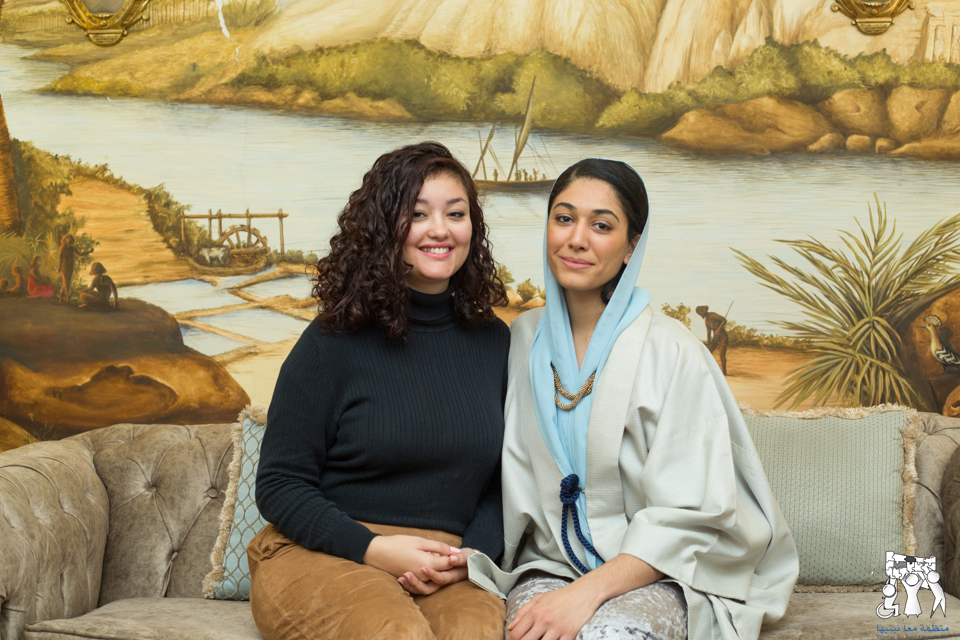Youth Blog: Intergenerational Peace: We Need to Redesign the Peace Table
By Hajer Sharief and Aisha AltubulyDate:

Hajer Sharief and Aisha Altubuly are members of Together We Build It, an intergenerational non-profit organization working to promote a gender-sensitive and human rights-based approach to peacebuilding in Libya. They are also members of UN Women’s Gender Innovation Agora. This article is part of the Expert Opinion series, which aims to provide a platform for Libyan women to express their personal experiences, professional opinions and analyses on different political and social issues in Libya.
Seventy-five years after the establishment of the United Nations, twenty years since the adoption of UN Security Council Resolution 1325 on Women, Peace and Security, and almost five years since UN Security Council Resolution 2250 on Youth, Peace and Security, hundreds, if not thousands of women and young people continue to work, unnoticed and unrecognized, for global peace and security. Yet it is 2020, and we are still begging for our inclusion in peace processes. Even UN Secretary-General Antonio Guterres, in a report to the Security Council stated, “we still live in a world where women face exclusion from peace and political processes” and noted that “ensuring the meaningful participation of women in all phases of United Nations-backed peace processes remains a challenge.”
If we agree that peace and security cannot come about without the full participation of women and young people, we must act differently by deconstructing the global peace and security agenda, moving from a state-centric approach to peace and security to a human rights-based, people-centered approach. Here are three things to do:
First, we need to redesign the peace table.
While Libyan women have suffered nearly a decade of armed conflict, we remember a time that was more peaceful than the present. We have analyzed what makes peace inclusive and we work daily, informally, to build peace. We are experienced in this field. We are well-qualified to support formal peace-making; and we will keep claiming that right.
Yet our experience is of external peace mediators and facilitators that continually reinforce the idea that a few men are equipped to make a peace that works exclusively for them, in their interests, as if peace and peace processes were their possessions, and as if there was no need for open and accessible mechanisms for direct women and young women participation, agenda-setting and influence. Why is the exclusion of women and youth still such an acceptable part of peace-making?
We are tired of calling for inclusion into something not designed for us: now, we’re calling for a radical redesign to achieve a peace table where no single group is in the majority and holding the upper hand in decision-making. Equity and equality should be guiding principles in peace process design.
Second, support intergenerational peace and security co-leadership
As an intergenerational group of women peace activists, we aim to address the artificial division being made between two rooms, one for women, the other for young women. This reinforces an existing generational divide in feminist movements working for peace and security. Because peace takes a long time to build, women peacemakers of all ages need support and encouragement to collaborate and co-lead together.
Two years ago, we squarely faced two questions at Together We Build It:
- How can we bridge the generational divide in the women peace and security agenda?
- How can we build cross-generational exchanges and co-operation, and ensure co-leadership among different generations of peace activists?
We developed our insights on why the generational divide happens, what keeps it in place. We officially adopted an intergenerational co-leadership approach in our peace and security work, reforming our internal structure to promote our vision. Today, older and younger women participate at all levels of our decision-making processes, from board to senior management, to project implementation. Our intergenerational co-leadership approach has empowered our work for women peace and security, because it enabled us to work with and for women of all ages. Therefore, our mantra for peace and security is: we need to co-lead and co-decide in order to co-succeed in peace and security.
Third, protect women peacebuilders
The spotlight has recently focused on protecting women peacebuilders, especially those who face retaliation and security risks because they engage with the UN and the Security Council. But protection for peace activists must come from an understanding of why we are at risk. It is important not to only point out our gender and age while ignoring the fact that it is our ideas and authority as leaders that threaten oppositional armed groups. We are targeted for promoting justice and reconciliation, disarmament, and human rights for all; and most of all, for attracting people to these ideas and for building solidarity movements for peace.
Moreover, it's important that members of the international community do not misuse the “do no harm” principle to justify excluding us from meetings, panels and discussions to “protect” us. Locking us out of the room does not diminish the everyday dangers of opposing armed conflict. We know the risks we face as individuals if we participate: but we also know what happens when we are forced to stay outside the room, far from the making of decisions whose consequences we will have to live with.
We alone should have the final say over taking part in decisions that will shape our lives. Stand by us: we are not going to stop this work.